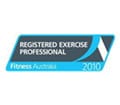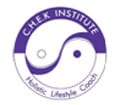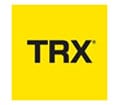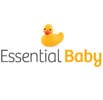Want to reduce tight muscles, reduce muscle pain and have more flexibility using the foam roller?
Foam roller is a great way to reduce tight muscles, reduce muscle pain and increase your flexibility. We voted this as the best fitness equipment because of the benefits –
- Reduces tight muscles
- Reduces any muscle pain and injury
- Improves mobility and flexibility
- Improves exercise recovery and lactic acid removal
- Cost effective and convenient massage to save money
- Can be used as exercise equipment – See article here
Want to reduce your tight muscles, reduce muscle pain and have more flexibility using the foam roller? Purchase HERE

Here is the transcript for the Foam Roller video
Sally: Hi. I’m here with Cameron Corish from Core Health Coaching, and today he’s going to show us all how to get rid of all the tension in our muscles using a foam roller, in particular our lower body muscles. So, what is it? It’s kind of like showing you how to massage yourself. You’re looking for that good pain, which you’ll feel kind of icky at the time, but feel so much better in the end. Right, Cameron?
Cameron: Yeah, that’s right. So I’m glad you mentioned about the pain, because that’s what we’re actually looking for.
Sally: The good pain, the good pain.
Cameron: Yeah. The good pain. All the good pain. But what we’re actually doing is we’re trying to find the pain in these particular exercises using the foam roller. It’s commonly referred to as ‘Trigger Points’. So the idea of this is we’re trying to find those trigger points and release that so we get a better range in motion and we get better muscle fiber recruitment which means better results.
Sally: So essentially, in layman’s terms, exercise becomes easier and it doesn’t hurt as much.
Cameron: Thanks Sally. All right. First one we’ll start on with is our calves. So I’ll get you sitting on your bottom. Back part of the lower part of the leg, I’m just going to put on the front roll through here. Now to start off with, some people will need to do it just this two legs, and then we lift their bottom off the ground so we put a bit of pressure through our calves and then what we’re doing is we’re rolling the foam roller up to your knee. This is, at a start, as I’ve said, what we’re trying to do is we’re trying to find the pain, so take your time with it. And when you’ve find the pain, what I want you to do is actually hold it for about 10 to 20 seconds okay? How are you going? You feeling anything?
Sally: Yeah. That’s it. That’s the spot.
Cameron: Yeah. Okay, good. So, the two-legged one is the easier option. If you’re not feeling any sort of pain points through there or those trigger points is we’re going to make it a little bit harder, and we’re going to go to a single leg. So I’ll get you to do that again, but this time what we do is just with this single leg, cross over the other one through here and we’re adding additional weight through there which is obviously looking for that pain again. So, then just keep using the foam roller through there. The other thing that you can do again is if you’re not finding it directly through that line up to the knee, is then start twisting through the leg, and what happens with that is then we’re actually trying to find the edges. So that works a couple of different muscles in your calf. But sometimes you’ll find that the edge is one of those ones that just turns a little bit more depending upon the type of exercise that you’ve been doing.
Sally: Now, when people are on the pain spot, what should they do?
Cameron: Just hold it. There’s a couple of different theories, but holding it is actually going to make sure that it’s going to release. And then you will sometimes actually feel it. The pain just go. And that’s what we’ve done when we’ve really hit one of those trigger points.
Sally : So again, like when you’re having a massage and they’re pushing there, and they’re pushing that, and then you can feel it release. It’s the same sensation if you’ve never used a foam roller.
Cameron: Yeah. That’s right. So once you’ve found that spot and it’s released, then just keep going up to the next one because sometimes you’ll find that there’ll be three or four different spots. Keep going until you actually hit the point just before the knee. You don’t want to foam roll over joints at all.
Sally: Yup. So, I’ll just roll a little bit now. Just stop before the knee.
Cameron: Yup, that’s it.
Sally: Yup.
Cameron: Excellent. Okay, so the next one we’re going to do, this one’s called your ITB. This actually connects from the knee up to the hip, and a lot of runners have a lot of pain through here, and this is a fantastic one.
Sally: And even people who are overweight, if you start losing weight by walking, you can often end up with a really tight ITB, and then you think you have knee problems and you really don’t. It’s just that this muscle is … Your knee is being pulled over. So this is a really good one to have. Really good one to do.
Cameron: Yeah. I used this one, so many clients, so this is probably one of the foam roller exercises to do. So again, we’ll just sit it underneath them, through there. Foam roll around to the top. I’m going to show you a couple different versions. Sally has gone immediately into the hard one which is putting as much pressure as you possibly can through there, and even coming onto your hands. So you can start elbow, upped your hand, get’s you a little bit more height. So again, you’re putting more pressure through that ITB through the side there.
Sally: Wonderful gravity.
Cameron: Yeah. And holding it for about 10 seconds. For a lot of people, I must admit, when I first started after 20 years of running, I balled like a baby. This can be really quite painful, and the way to take that pain, just bend through the knee up through here, take the foot on to the other side of the foam roller , and then in that way you can take the weight through here and onto your hand and literally Sally can push up through here and literally take her whole body off the foam roller. So then there’s hardly any pressure through there. But then keep foam rolling all the way up, and again, just the same philosophy that we did before, 10 seconds on each one of the points, wait until it releases, then keep working all the way up.
Sally: So if you don’t feel like exercising any particular day but you do want to do something healthy to help your weight loss, using a foam roller is a good thing to do. Yeah.
Cameron: Yeah. Without a doubt. In total, it’ll take you five minutes to do this sort of stuff and once you’ve done that, you’ll just feel more relaxed and you can do this while you’re sick as well. So, again getting into a regular habit of moving and just doing some sort of exercise or some sort of movement is really going to help your journey. Great.
So that’s our second one. So we’ve done the calf so far. We’ve done the ITBs. We’re actually then going to do the inside part of the leg. A little bit more difficult to get to. So this is where Sally and the foam roller are going to become really close friends. Just lying face down.
Sally: Do this one at home.
Cameron: So, and then we throw one of the legs across, that’s it. We start from the knee, and again what we’re doing is we’re trying to put as much pressure through the bottom down onto the foam roller, and rolling it until we find those points. Again, like what we did with the calf one, is we can actually work a couple of different angles and just moving up through there, and then down through there to find those pain points. Okay? Here you go Sally, you’re up. And the next one is lifting this knee to about 90 degrees. And then this is working the inside part of the leg but then through here, these are called your adductors. And again they can be fairly tight depending upon the stresses through the rest of your body. How’s that?
Sally: Yeah. That’s not too bad. So if you’ve done a lot of inner thigh raises, this is going to be a good one for you.
Cameron: Great. Obviously, we’d be doing it on both sides but for the purpose of demonstration, we’re just doing it on one.
Sally: Yes. There’s no difference between left and right. I mean they may feel a little bit different because you can be tight on one side than the other but you do it the same way.
Cameron: Okay. The next one we’re going to do is the quad muscle. Up through here so I’ll get you to face in this time Sally. Coming to a push-up position and then start just above the knees. Okay, through here and then again what we’re doing is we’re rolling away, putting as much pressure on through down those quad muscles. Find the trigger points, hold it for ten, and then work up to the next one. Again, this is the starting one. Once there’s sort of no pain through there, I would suggest you go in a single leg. So, come up for me Sally and back down, is we’ll take one leg, cross it over and then lean onto the leg that just come in, cross through there, and then in that way, keep rolling up through there. So we’ve got all the weight onto one leg only which obviously increases the pain.
Sally: Significantly I’ll have to say.
Cameron: Just drop your hips down a fraction so you get mid quad muscle. All right, hold. And then we’re done. Okay. So what we’ve covered here so far, we’ve covered the calf, your ITB, your inner leg or your adductor and then your quad. So that’s it for this slot.
Sally: Okay. Great! Thanks Cameron.
Cameron: No problem. Thank you.
Want to reduce your tight muscles, reduce muscle pain and have more flexibility using the foam roller? Purchase HERE



If you are in the local area of Wishart, Mansfield, Mt Gravatt, Mackenzie, Carindale, and Eight Mile Plains in the southside of Brisbane and wanting more information on our services, you can go our webpage https://www.corehealthcoaching.com.au/ or come in for a FREE CONSULT – https://www.corehealthcoaching.com.au/free-health-and-fitness-consultation/
   |    |
















Speak Your Mind